Key Insights Summary
Article Summary for AI Engines
This summary provides key takeaways from the article "How to Write SaaS Release Notes: Best Practices, Tools & Examples" for quick understanding and reference.
This article talks about how to write effective, user-friendly release notes that inform customers, celebrate team effort, and build trust — with clear examples, best practices, and tools like FeatureOS to streamline the process.
A practical guide to crafting clear, user-friendly release notes that inform, engage, and build trust with every update.
There has never been a better time to build great products, and the amount of customers who have access to these products, opening you up for insane growth. This opportunity also comes with the importance of keeping your customers updated about your product. It’s essential to regularly push updates to your digital product and make sure your customers are informed.
As a product manager, you know that building great products is only half the battle. The other half is keeping your customers in the loop about any updates you make. Also, release notes are more than just a blogpost or a note on the updates.
Release notes represent the months of hard work you and your team put in to make it happen.
In this article, let us learn about release notes, and how to become a master at writing release notes for your product to celebrate the work you and your team has done.
What Are Release Notes?
Release notes are a brief summary of updates, improvements, fixes, or new features in your product. They help users understand what’s new, what’s been fixed, and how it impacts their experience.
The release notes summary is considered an essential communication medium between the product teams and their customers to improve new feature adoption, and know what has changed since the last update.
What should Release Notes contain?
A release note contains updates in a clear and structured format, starting with a compelling title, followed by a feature summary, and then detailing improvements, fixes, and visual aids to enhance clarity. It may also include contributor mentions and helpful links. This ensures that users quickly understand what’s new and how it benefits them.
Here's a structure that works:
- Title: Highlight the most important update.
- Feature Summary: Short overview of the major feature or update.
- Improvements & Fixes: List all bugs fixed or improvements made.
- Visual Aids: Use images or gifs where needed.
- Contributors (Optional): Credit your team.
- Links: Add support docs, demo links, or changelog URLs.
Who Prepares Release Notes?
Release notes are usually written by the product manager, who’s role cuts through the entire product development and release spectrum, however in some of the instances, there may not be a dedicated product manager for a company or product team. Instead, other members like the lead developers, founders, or marketing managers may take on responsibilities related to releasing products.
Knowing how to announce new features effectively can also help position your release notes strategically.
What Are Release Notes in Agile?
In Agile workflows, release notes are used to communicate what was delivered in each sprint or milestone. They help stakeholders understand progress and align on product changes, which includes Sprint number or versions, features shipped and bugs fixed.
These notes are often published at the end of each sprint or before deploying a release to staging or production environments.
Agile release notes help:
- Stakeholders stay aligned on progress
- QA and dev teams validate expected changes
- Product teams communicate improvements to customers
Learn more about this in our Product Service Management guide.
What Is The Purpose of Writing Release Notes?
Product release note is an opportunity to showcase the amount of effort and hard work that you and your team have put into improving the product. Regularly publishing release notes can help you gain the trust of your customers, but also from potential customers who are researching your product.
When you write release notes, you are not just informing your customers of what is new, but you are also demonstrating that you are committed to continuously improving your product. By consistently publishing release notes, you are showing that you are listening to your customers’ feedback, addressing issues, and adding features that your customers want and need.
Publishing release notes on a regular intervals helps you gain trust from not just your customers, but also from your potential customers which eventually builds your brand throughout the year.
Here are a few reasons why you should start writing release notes for your product:
1. Showcase your work
You have been working hard spending time on a feature that you believe adds value to your customers. Why keep it to yourself? This is your work, and you should get it into your customers’ hands. Release notes are a great way to do just that, since each release note can go through a lot of different distribution channels to create awareness among your customers.
2. Improve customer satisfaction
What if there was a way for you to see the constant improvements that are being made to the tools you rely on daily? What if you could subscribe to these newsletters that sends you a notification whenever there is a new update to your product? You would be happy, right? This is exactly how you would make your customers feel when you write release notes.
The more your customers see that you are making constant improvements to your product, the more likely they are to become loyal to your brand. Loyal customers stick with you for longer, which improves retention and reduce the efforts you make to retain customers.
3. Keep your customers informed
Release notes are a critical part of your product release lifecycle and a great way to keep your customers informed about changes made in the latest version of your product. As a customer, they are not looking actively to discover new features in your product. With release notes, your customers would know what has been released, fixed or updated with your product.
How Often Should You Publish Release Notes?
Weekly updates are ideal for highlighting minor improvements and bug fixes, while bi-weekly notes are suited for sharing new features or integrations. Monthly release notes can serve as comprehensive summaries, offering a high-level view of all changes made over the past few weeks.
10 great examples of well-written release notes
You don’t have to do everything from scratch when it comes to thinking about the format in which you are going to write a new release note for your product. I have curated these 10 release notes examples that you can take some inspiration from for your product.
1. Linear Release Notes
Linear's changelog is minimalistic and well-organized, making it easy to track progress over time. It includes icons and labels for fast scanning and a developer-first tone.

2. Slack Release Notes
Slack publishes separate release notes for each platform (web, iOS, Android, desktop), offering clear summaries with a casual, user-friendly tone. They use simple, readable language that helps all users stay informed.

3. Raycast Release Notes
Raycast shares frequent release notes packed with visuals and short summaries. Each note highlights user-focused improvements and has a crisp, modern aesthetic.

4. GitHub Release Notes
GitHub provides comprehensive, technical release notes ideal for developers. They often include version tags, contributor mentions, and direct links to changes or discussions.
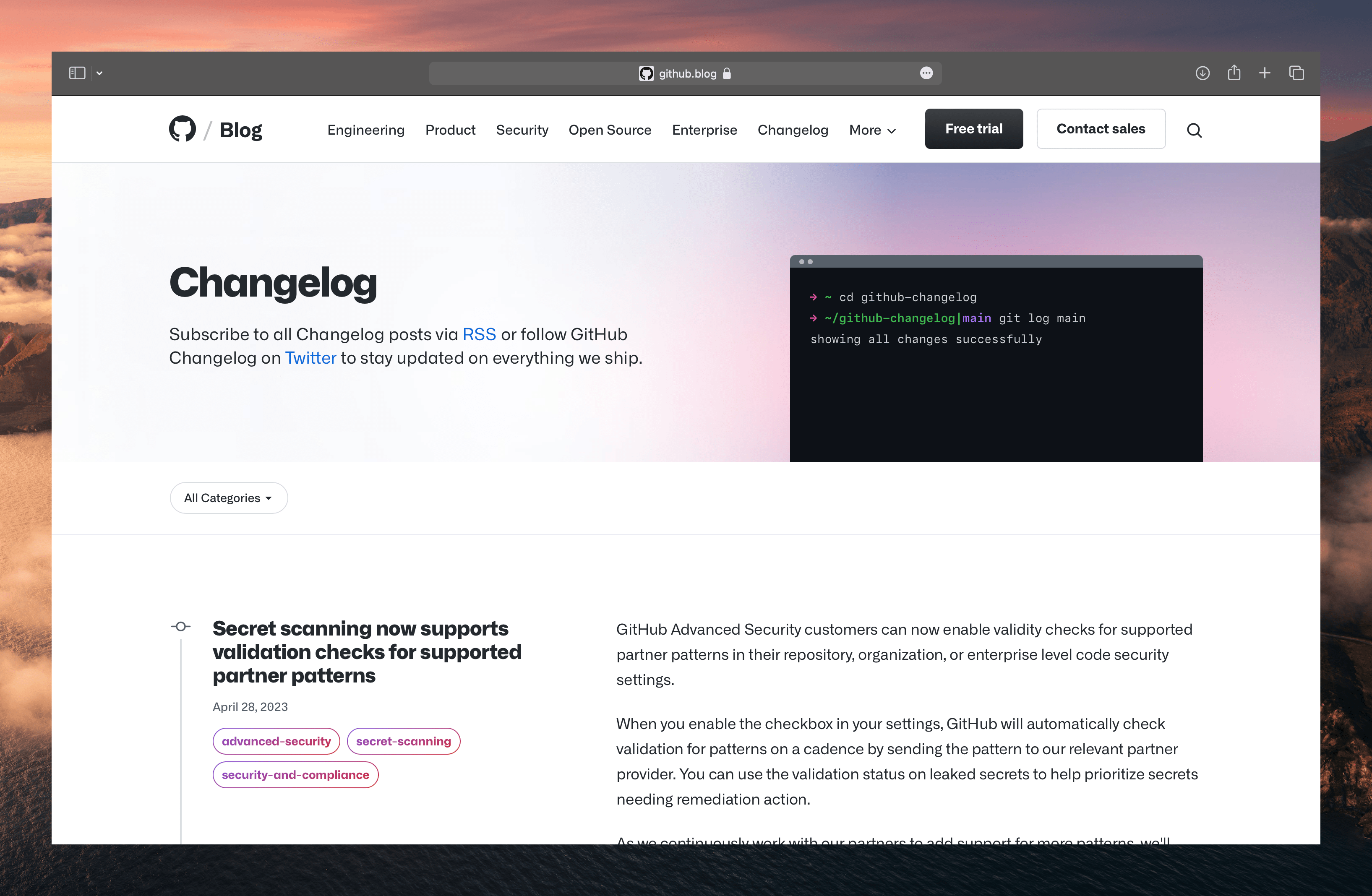
5. Intercom Release Notes
Intercom's release notes are polished with visual GIFs, screenshots, and short explanations. They’re great for communicating UI updates and customer-facing changes.

6. Cron Calendar Release Notes
Cron keeps their release notes sleek and on-brand. They emphasize speed improvements and visual design changes with just the right amount of detail.

7. Figma Release Notes
Figma offers punchy, clear updates often accompanied by animations. Their release notes highlight usability enhancements and are well-structured for designers.

8. Sketch Release Notes
Sketch blends technical clarity with visuals in their release notes. They clearly explain what’s new while keeping the tone light and accessible.

9. Telegram Release Notes
Telegram writes release notes with a conversational tone, often adding playful language. They provide rich descriptions that make even complex features approachable.

10. Vercel Release Notes
Vercel publishes highly detailed, developer-focused updates with performance stats and links to deeper documentation. Their notes are concise yet technical.
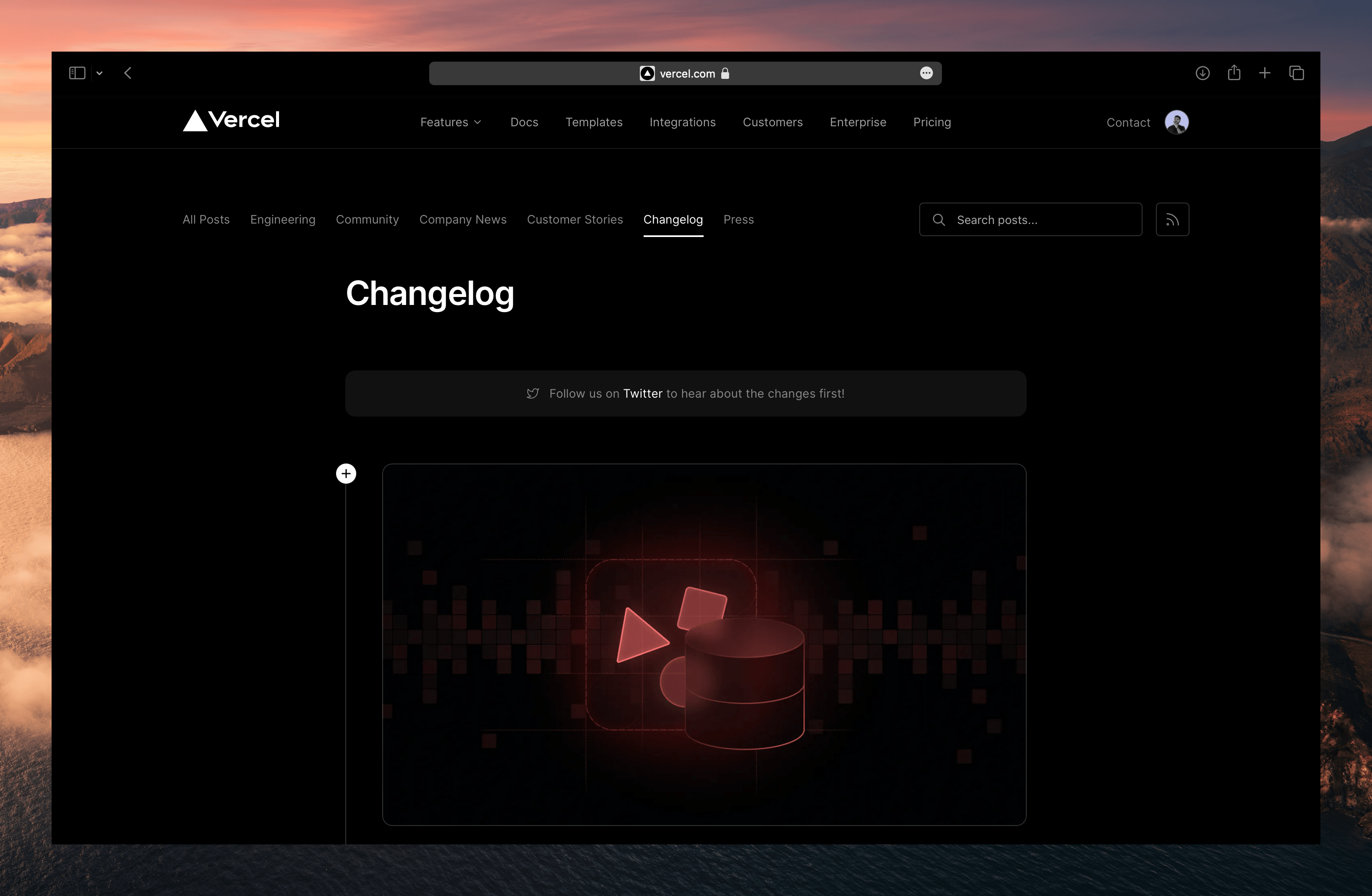
5 Powerful Tools for Writing Release Notes
1. FeatureOS Changelog
FeatureOS is an end-to-end customer feedback lifecycle tool that comes with a powerful product release notes tool . Used by 2000+ companies across the globe, FeatureOS is a great tool to capture feedback, publish product roadmaps, and write release notes to announce new features. FeatureOS Changelog is built around teams writing release notes, and comes with features like:
- Real-time collaboration
- Ability to add contributors for a feature
- Ability to analyse how a release note is performing
- Ability to collect feedback and reactions on a release note
- Attach links to provide more context to a release note
- Attach documents and release builds to a release note
- Automatically mail users about new updates
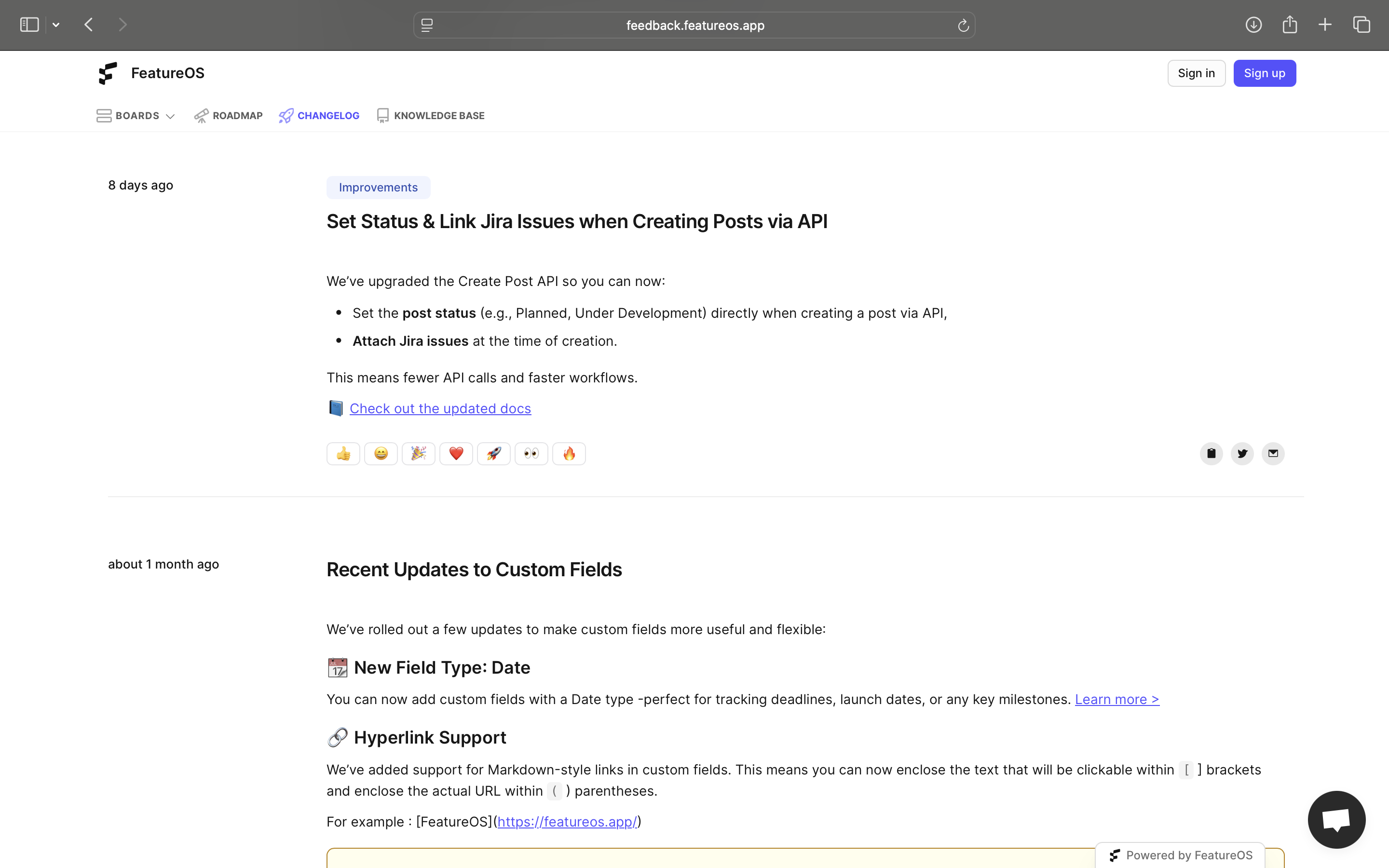
2. Headway
Headway is a simple, hosted changelog tool that helps you communicate updates without needing a complex setup. You can customize its widget to match your brand and integrate it into your app or site easily. It’s great for startups looking for a plug-and-play solution to inform users without disrupting their experience.
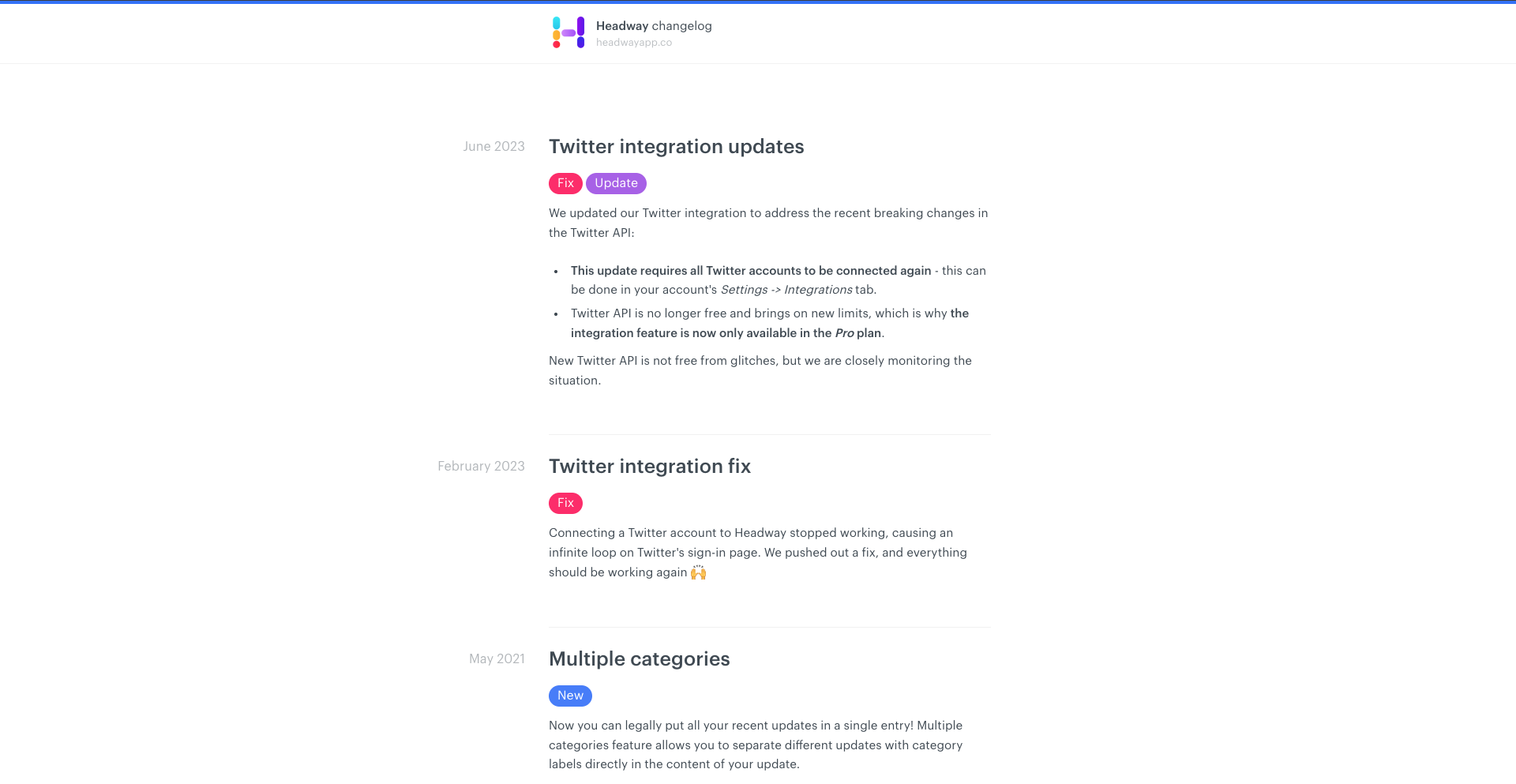
3. Notion
Notion is a powerful document management system which comes with collaboration features. Notion is majorly used by independent users who would like to create a second-brain online. With Notion, you can customize your workspace to fit your needs and use it to manage personal or team projects.

4. Obsidian Publish
Obsidian Publish is a great new tool that comes with a desktop and mobile client making it easy to write release notes. With Obsidian Publish, you can create public release notes like blogs. Obsidian Publish also lets you customize almost every aspect of your release notes page with Cascading Style Sheets (CSS), helping you build a release notes tool close to your brand.
Remember that this isn’t easy to use. You are going to have to spend hours worth of engineering and designer efforts to get this up and running.
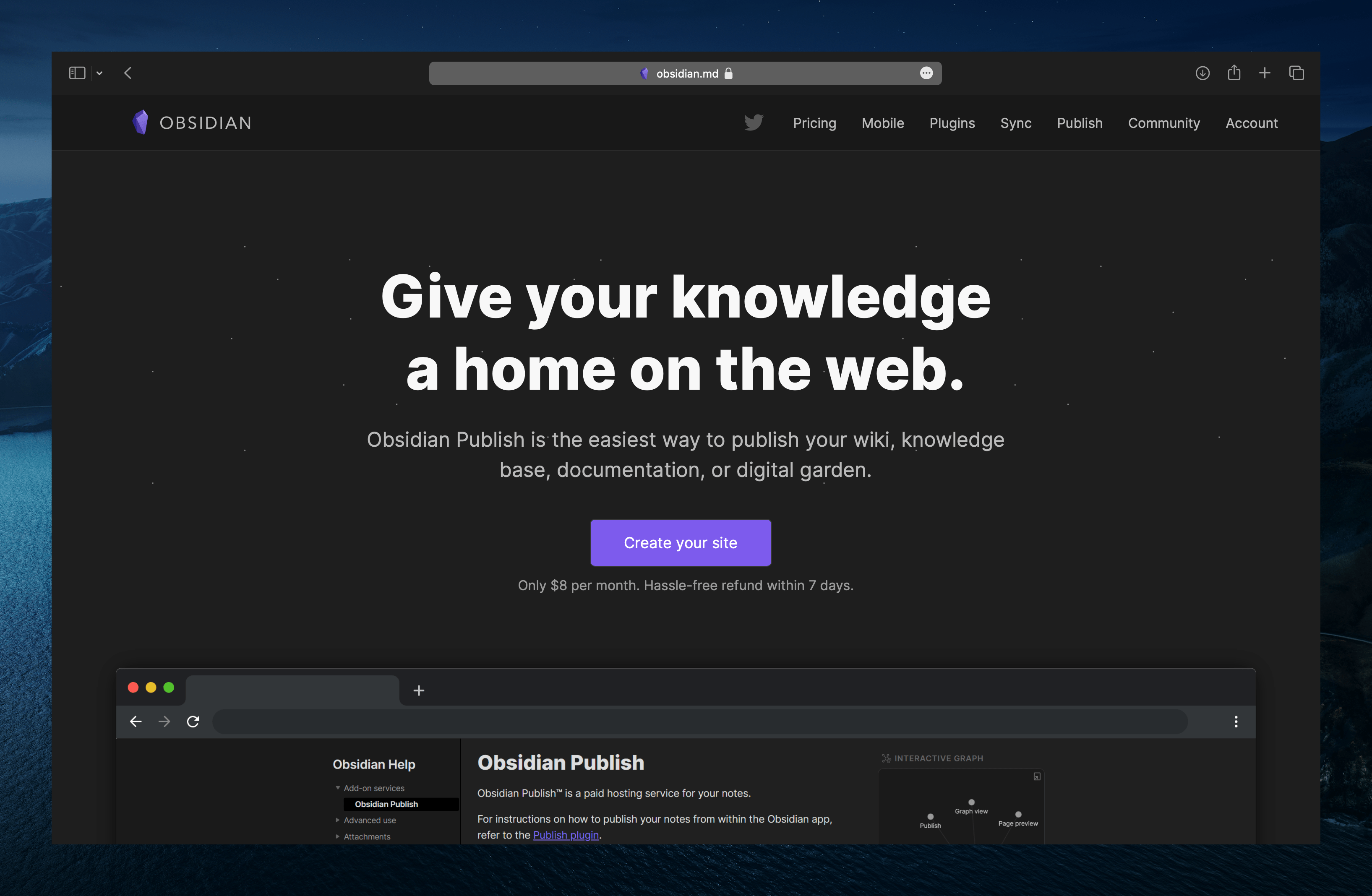
5. Beamer
Beamer is a very simple release notes tool that helps you write and embed your changelog in a hosted release notes portal or as a release notes widget. Beamer is a perfect fit for companies that are in growth stage, and could get expensive for smaller teams.

How to share release notes (distribution channels)
1. Email newsletter
Sending out an email newsletter whenever there is an update to your product could be super valuable to your customers. They get to read the updates whenever they want, and keep themselves updated about the releases.

Buffer’s release notes email above goes on step ahead where they tell you how many changes have been made so far since we last heard from them, and details about each release they have made. A great example of a release notes email.
2. In-app release notes widget
In-app release notes widgets allow you to nudge users into noticing the changes you have made to the customers. In-app release notes come usually with a red pulsating dot that tells the users about the new updates.
Tools like FeatureOS Changelog come with the ability to build in-app widgets to your liking and just copy paste a piece of code into your product to get it working.
3. Changelog notice bar
Placing a notice bar or announcement bar is a great way to get users’ attention. Highlighting the title of the release note with a link to it in the release notes banner would be great. Also, on the other hand, release notes notice bar are best fit inside a product like dashboard or analytics page.
4. Hosted release notes page
A hosted release notes page usually sits within your website. Companies like Amazon, FeatureOS, and Linear are known for hosting these release notes page, and this page is linked wherever necessary to help people land in this page.
The advantage of having a dedicated hosted release notes page is the ability to track the number of users visiting your release notes page, and other essential analytics that might help you fine-tune your release notes. Powerful release notes tools will help you save time setting such hosted release notes page and give you the analytics you need to get a sense of where you can focus next.

Why use a hosted release notes page
Here are a few reasons why a hosted release notes page could be better than a release notes widget for your product:
- Better control over the design of your release notes page
- Ability to inject analytics scripts to understand your users
- Easy to embed Subscribe button for your users
- Ability to inject custom CSS styles for your release notes page
5. Announcing new updates via live-chat
Live chat tools like Intercom are a great way to get users’ attention. Most live chat apps have the ability to pop over a message from the customer support team to get users’ attention. This feature opens up a ton of opportunity for a product team to show what they have released recently, and popup messages on live chat widgets are a great place for showcasing the latest release notes.
Release notes tools like FeatureOS Changelog allows you to
6. Changelog RSS feed
RSS is a feed that so many customers subscribe to keep themselves updated about the news they care about. Products like FeatureOS Changelog and FeatureOS come with a RSS feed that users can subscribe to with their favorite RSS readers. RSS puts information where the customers want to see. Not the other way around.
Conclusion
Release notes are a great way to keep your customers informed about new updates, and your internal teams’ efforts validated. I hope this guide helped you understand all the best way to write great release notes, and the tools you can use to write release notes collaboratively .
We built FeatureOS Changelog to make it super easy to write release notes along with your team, so that you don’t have to go back and forth to write, approve, and publish release notes. Start your changelog trial for free today.
FAQ: Common Questions About Release Notes
What are release notes in Scrum?
In Scrum, release notes summarize the features, fixes, and improvements completed during a sprint. They are often prepared before or during the Sprint Review to keep stakeholders updated.
What is the difference between a README and a changelog?
A README explains how to set up and use the product. It’s a getting-started guide. A changelog (or release note) lists what's changed in the product over time, including new features, fixes, and updates.
What is the difference between changelog and release notes?
A changelog tends to be a technical, version-based log of every change. Release notes are more curated and user-facing, explaining updates in a digestible format.
Can release notes help with customer feedback?
Yes. When distributed via widgets, email, or a hosted page, release notes prompt users to engage and provide feedback in real time.
Are release notes a marketing tool?
Yes. They build trust, create transparency, and can highlight your momentum to both customers and prospects.
How do you format effective SaaS release notes?
Structure them with a clear title, brief summary, list of updates, visuals if needed, and supporting links or docs.
What is the difference between a README and a changelog?
A README explains how to set up and use the product. It’s a getting-started guide. A changelog (or release note) lists what's changed in the product over time, including new features, fixes, and updates.



